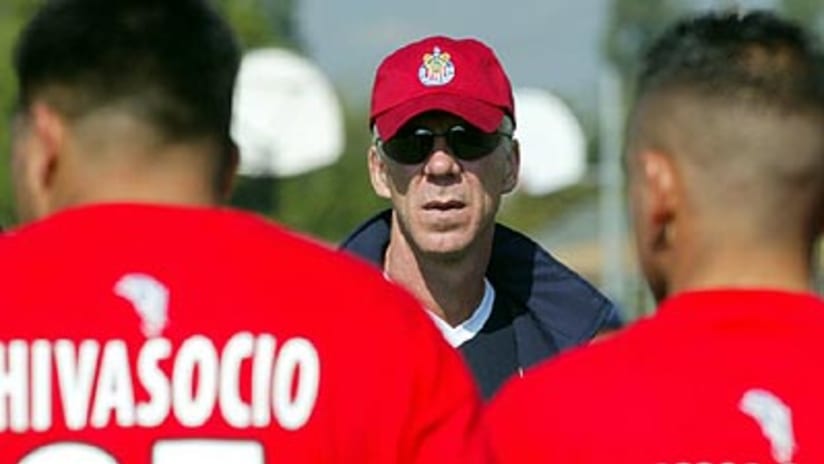This Friday, Thomas Rongen, head coach of Club Deportivo Chivas USA, will participate in the 2005 MLS SuperDraft in Baltimore, Maryland. This week we sat down with the veteran manager and asked: What exactly is the SuperDraft? His answer is as follows.
In the SuperDraft, MLS teams can pick up four players each - or rather, pick players in four rounds - that can fill out an 18-man roster, or this season for the first time could become part of a club's reserve team.
As we know, MLS is a different league from most countries, and it's a very different way of building your team. There are certain mechanics in place, the SuperDraft and the Expansion Draft being two of them. The acquiring of players is not necessary through a free-transfer market.
The SuperDraft is very similar to the NFL or the NBA; it's an important way for teams to acquire young, talented players with great futures. And, clearly, having the number one or two pick - as in our case - is important.
Most of the players in the SuperDraft are collegiate players. Some are guys who came straight out of high school - Freddy Adu, last year's number-one pick, is a good example. So it's a combination of college seniors and what since 1997 we've referred to as "Project-40" players. There are about 100 players currently on the draft list.
Sometimes drafts are deeper in terms of quality. I would say that this draft is probably somewhere in between - it's not a great draft, but it's not a poor draft, either. There are some good players out there, and I think that teams will position themselves to get the player - or two players preferably - that they feel can help their team right away.
Most of the players in the SuperDraft have played their four years of college eligibility and will graduate university by May of this year. The P-40s are different; those guys leave school early. In this league we now give players a choice, you can stay in school and pursue your education, or you can become a pro. Most of the time players, or their parents, will make a decision that they think is best for themselves, or for their child.
The good thing about P-40 is that outside of players' regular contract, they get a little stipend as well. It used to be from Nike, but now it's from adidas. They will get at least three years of protection - they cannot be waived, they cannot be cut, they're always part of the team, they don't count against the 18-man roster, so they have a chance to develop. And the league also puts every year an amount of money to finish their education, which is also important and a smart thing to do.
In addition to picking players in the draft, there's always the potential of a trade. Every year there's always some move that happens. Some team will give up their pick for a particular player, teams move up and down in the draft. Some teams feel that this draft may not be worth it, and are willing to forego a player to pick up a pick in next year's draft. We've been offered all of the above.
There are different philosophies and strategies obviously. Do you go for the best available athlete? Do you go for the best player in a particular position? I think that most teams have been around for nine years now and have a pretty core group of players.
Other teams, like Real Salt Lake and ourselves, we're just looking at the best available player that's out there at that particular time. We have a pretty good idea of what we've done in the Expansion Draft, and of the players that we're getting from Mexico. So hopefully we can find the best athlete, and also address some specific needs.
All the details of the SuperDraft

More News
More News
-
Transfer Tracker
DC United sign goalkeeper Sean Johnson
-
Transfer Tracker
New England Revolution acquire Brooklyn Raines from Houston Dynamo
-
Transfer Tracker
Colorado Rapids acquire Dante Sealy from CF Montréal
-
Voices: Joseph Lowery
Holiday wishlist: What every MLS team needs this winter
-
Transfer Tracker
Austin FC acquire Joseph Rosales from Minnesota United









